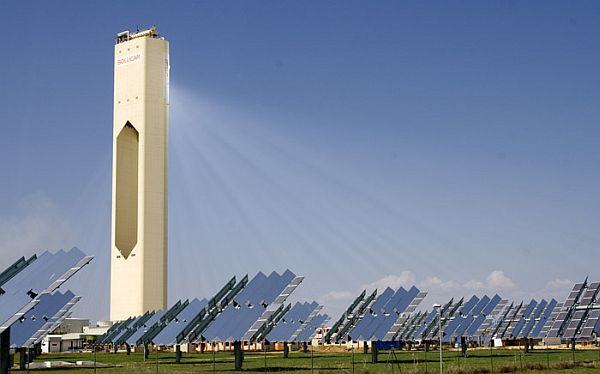 Sempra Energy has started construction on a 700MW solar power plant in Mesquite desert in Arizona. This plant will use little or no water. Construction on the first phase of this plant, which is slated to cost about $500 million, to produce 150MW will begin in mid-2011 and will complete in 2013. The US Department of Energy has provided conditional guarantees for $359 million for the project.
Sempra Energy has started construction on a 700MW solar power plant in Mesquite desert in Arizona. This plant will use little or no water. Construction on the first phase of this plant, which is slated to cost about $500 million, to produce 150MW will begin in mid-2011 and will complete in 2013. The US Department of Energy has provided conditional guarantees for $359 million for the project.
Sempra has contracted with Suntech Solar to supply the Polycrystalline solar panels. Suntech is the largest manufacturer of polycrystalline solar panels with a production capacity of 1GW with manufacturing plants in China and Japan. One of its US based plants is located only 30 miles from this project site.
Though Suntech has been associated with a number of solar energy projects around the world including a high visibility project for the Masdar city in UAE , this Arizona project will be its largest. Zachary Holdings , a prominent EPC contractor, will install the Suntech supplied panels. With each panel rated only for 280 watts, Zachary will need to install and interconnect over 500,000 of these.
Solar power plants of such large capacity have been using solar concentrators ( like parabolic reflectors, also termed as heliostats) to direct the sun energy on water tubes to produce steam that runs a steam turbine. For example, the Abengoa project to generate 250 MW in the Mojave desert in adjacent California will use solar concentrators to heat water, produce steam and run steam turbines. This project is also due for completion in 2013.
The attraction for “waterless” solar generation is that solar power plants can be setup in dry places such as deserts where there is no shortage of land that cannot be used for agricultural purposes. Also displacement of human settlements is minimal besides the natural advantage of abundant sunshine. However, in these locations water is scarce. Any technology that can minimize or avoid the use of water would therefore be very attractive.
The global engineering community will therefore watch the Sempra project with great interest to see if such “waterless” projects could be the technology to use for solar projects.
Via: Arizona Daily Star




